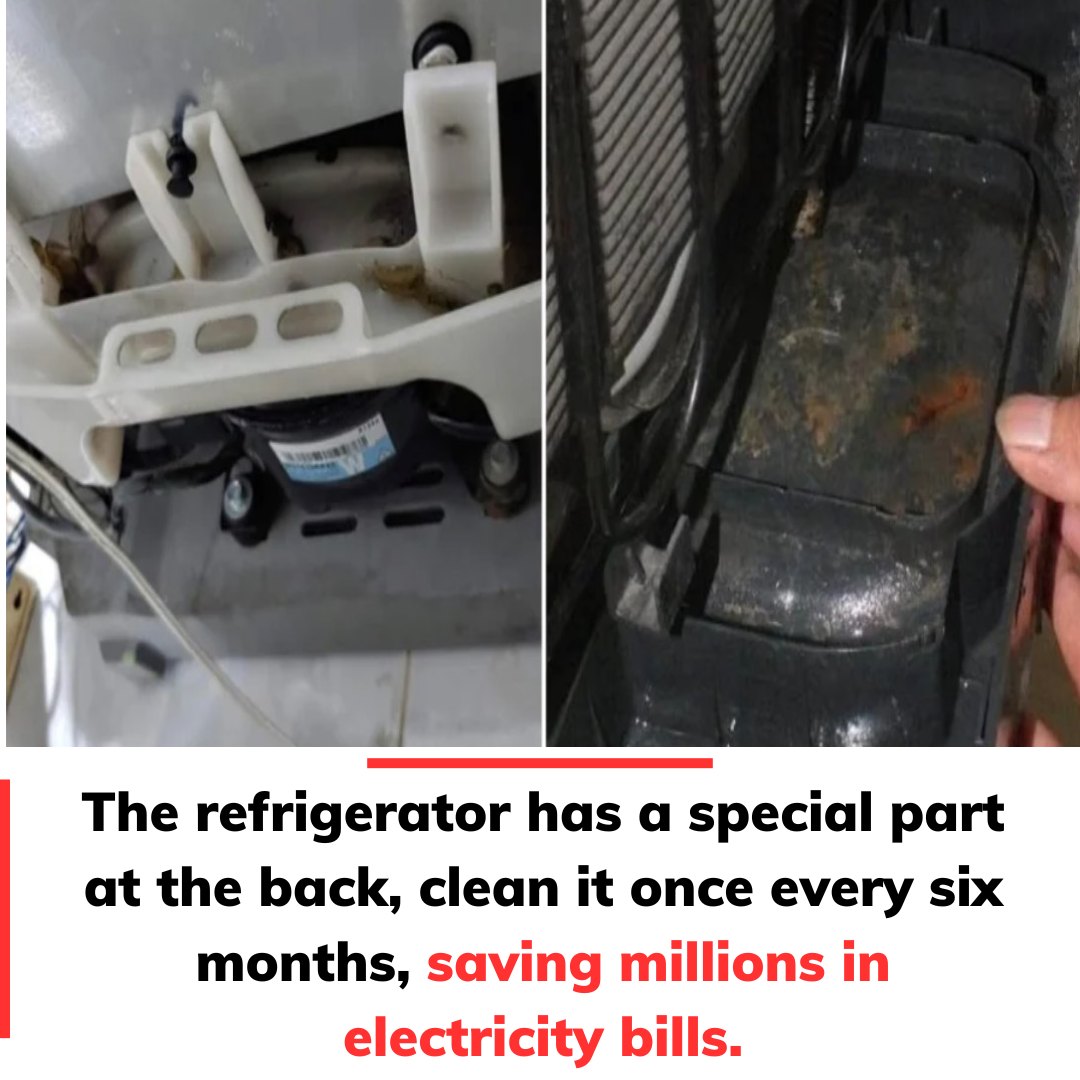Your refrigerator is one of the few appliances in your home that runs 24/7, consuming a significant amount of electricity daily. Its primary function is to keep your food fresh and beverages cold, but over time, neglecting certain maintenance tasks can cause your energy bills to skyrocket. While most people remember to clean the inside shelves, drawers, and door gaskets of their refrigerators, there’s one crucial part located at the back of the appliance that often goes unnoticed—the condenser coil. Cleaning this hidden component once every six months can drastically improve efficiency, save on electricity costs, and even extend the lifespan of your refrigerator.

Why the Condenser Coil Is Important
The condenser coil plays a vital role in your refrigerator’s cooling system. It contains liquid refrigerant that circulates through the coils, absorbing heat from inside the appliance and releasing it outside. This process is what keeps your refrigerator cold. However, because the condenser coil is usually located behind or underneath the refrigerator, it tends to accumulate a significant amount of dust, pet hair, and other debris over time. When these coils become coated with dirt, they lose their ability to dissipate heat effectively. As a result, the refrigerator’s compressor has to work much harder to maintain the desired temperature, leading to increased energy consumption and higher electricity bills.
Additionally, dirty condenser coils can cause the refrigerator to overheat, which not only wastes energy but also shortens the lifespan of the appliance. In some cases, the refrigerator may even start making louder noises as it strains to function properly. This seemingly small issue can escalate into costly repairs or the need for a replacement if left unaddressed.
How Often Should You Clean the Condenser Coil?
Unlike cleaning the refrigerator’s interior, which many people do regularly, the condenser coil doesn’t require frequent attention. Experts recommend cleaning it approximately once every six months. However, if you have pets—especially dogs or cats that shed—you should consider cleaning it more frequently. Pet hair can accumulate on the coils much faster, reducing their efficiency significantly.
Steps to Clean Your Refrigerator’s Condenser Coils
Cleaning your refrigerator’s condenser coils might sound technical, but it’s actually a straightforward task that requires minimal tools and time. Here’s how you can do it effectively:
- Unplug the Refrigerator: Safety first! Turn off the power supply to the refrigerator to avoid any electrical hazards during cleaning.
- Remove Food if Necessary: If you anticipate moving the refrigerator for extended periods, consider removing perishable food items.
- Pull the Refrigerator Away from the Wall: Gently slide the refrigerator out of its usual position to access the coils. Be careful not to damage the floor while doing so.
- Locate the Condenser Coils: In most models, the condenser coils are found either at the back of the refrigerator or underneath it. Some models may have a protective panel or mesh cover that you’ll need to remove.
- Clean the Coils: Use a vacuum cleaner with a brush attachment to remove dust and debris from the coils. If you don’t have a vacuum, a soft brush or cloth will also work effectively. Gently brush off the accumulated dirt without bending or damaging the coils.
- Inspect the Water Tray: While cleaning the coils, take a moment to check the water tray located just below them. This tray collects condensed water from the evaporator coils, preventing leaks and potential water damage. Although it doesn’t require frequent cleaning, accumulated dirt or insect debris can cause unpleasant odors. Wipe it down with a damp cloth if necessary.
- Reassemble and Restore Power: Once the coils and water tray are clean, put back any panels or covers you removed, slide the refrigerator back into place, and plug it back in.
- Monitor Performance: After cleaning, monitor the refrigerator over the next few hours to ensure it’s running efficiently and quietly.
The Benefits of Regular Coil Cleaning
Cleaning your refrigerator’s condenser coils every six months isn’t just about reducing your energy bills—it’s about maintaining the overall health of your appliance. Here are some key benefits:
- Energy Savings: When the coils are clean, the refrigerator doesn’t need to work as hard to cool the interior, resulting in lower electricity consumption and reduced utility bills.
- Extended Appliance Lifespan: Overworking the compressor due to dirty coils can cause it to fail prematurely. Regular cleaning reduces strain on the appliance, ensuring it lasts longer.
- Improved Cooling Efficiency: Clean coils allow the refrigerator to cool more effectively, maintaining a consistent temperature and keeping your food fresher for longer.
- Reduced Noise Levels: A struggling compressor often produces loud and unpleasant noises. Proper maintenance keeps it running quietly.
- Better Hygiene: Cleaning the water tray helps eliminate odors caused by stagnant water and potential insect debris.
Don’t Overlook the Water Tray
While the condenser coils are the main focus of this maintenance task, the water tray located beneath them is another component worth checking. This tray collects moisture that naturally drips from the evaporator coils, and although it doesn’t require frequent cleaning, it can sometimes become a breeding ground for mold, insects, or bacteria. Wiping it down periodically ensures your refrigerator remains odor-free.
A Simple Task with Big Savings
Your refrigerator works tirelessly every day, but with a little attention to its condenser coils, you can improve its efficiency, save money on electricity bills, and prevent costly repairs down the line. It’s a task that only takes about 30 minutes twice a year but offers long-term benefits that are hard to ignore.
So, mark your calendar and make refrigerator maintenance a regular habit. With just a vacuum, a brush, and a little effort, you’ll not only save money but also ensure your refrigerator continues to run smoothly for years to come.





